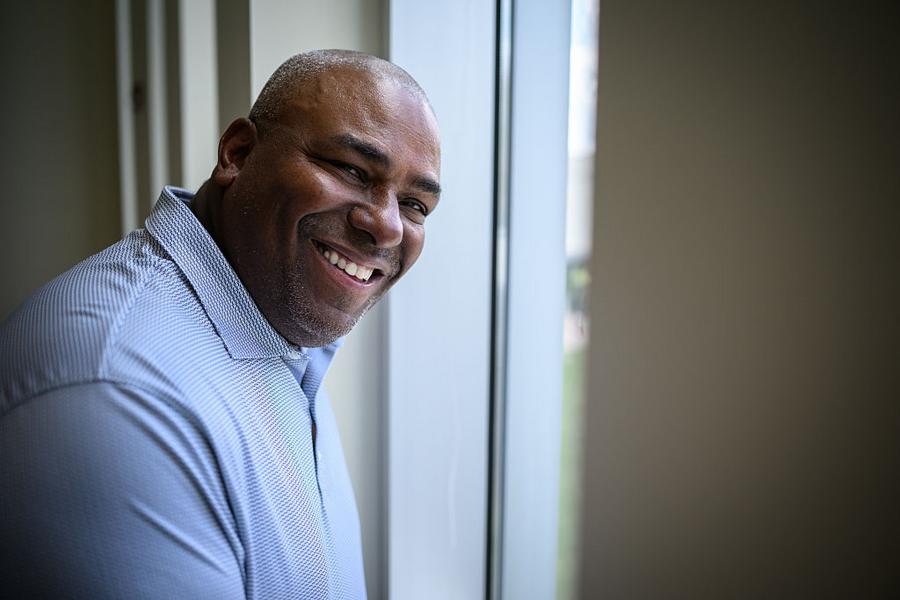Every July 1, sports fans, media outlets, and even celebrity financial websites like… ahem… us… celebrate what has become an unofficial holiday: Bobby Bonilla Day. It's the day the retired MLB outfielder receives his now-famous $1.19 million check from the New York Mets—something he's been collecting annually since 2011 and will continue to receive through 2035 (and for reasons we don't need to get into here, it's actually $1.4 million per year for the next few years). When it's all said and done, Bobby will have been paid $30 million for a 1999 contract buyout that was originally worth just $5.9 million.
The narrative is irresistible: here's a guy who hasn't played professional baseball in over two decades, still getting paid more than many active players. It's portrayed as the ultimate example of financial savvy, patience, and foresight.
And yes, on the surface, trading $5.9 million for $30 million seems like a genius move. So, every July 1, the whole world heaps praise on Bonilla for what some even call "the greatest contract in sports history." He's a passive income king. A man who outsmarted one of baseball's most storied franchises. But… did he really?
What if, instead of deferring that $5.9 million, Bonilla had just taken the money, paid his taxes, and put the remaining $3 million into an S&P 500 index fund? How would that have turned out?
Or what if he had the luck, guts, and foresight to dump it all into Microsoft? Or Apple? Or NVIDIA, or Amazon (both of which went public in 1999)… Or Google (which went pubic a few years later in 2004).
Ok and ya. Because we have to… What if Bobby had kept his money frozen in a savings account for a decade, then dumped it all into Bitcoin 🙂
Let's run the numbers and see what Bobby really gave up.

(Photo by Thomas Simonetti for The Washington Post via Getty Images)
The S&P 500: Not as Impressive as It Sounds
Suppose Bonilla had taken his $5.9 million buyout in 2000, paid taxes, and walked away with a clean $3 million. Then, like a disciplined investor, he simply dumped the money into a low-cost S&P 500 index fund and never touched it. No fancy strategies. No rebalancing. Just set it and forget it. I'll admit, I assumed this was going to be a no-brainer, better investment. I was wrong.
By mid-2025, that investment would be worth approximately $11.3 million.
And while that is a nearly fourfold return over 25 years, it's also significantly less than the $29.8 million he's set to receive from the Mets under his deferred contract.
So if we're comparing just raw financial outcomes, the S&P strategy loses. So what if Bobby had taken the lump sum, paid his taxes, and YOLO'd into some other investments…
The Tech Stock Home Runs He Missed
While the S&P 500 would've only netted Bonilla around $11.3 million, even a modest bet on the right tech company would have left that number in the dust.
Let's say instead of indexing, Bonilla put his $3 million into individual stocks. Not some obscure penny stock, but blue-chip names that were already well-known players in 2000.
Here's what that $3 million would be worth today if he had gone all-in on just one of the following companies:
- Microsoft (MSFT): $37 million
- Amazon (AMZN): $110 million
- Alphabet/Google (GOOGL): $262 million (IPO'd in 2004)
- NVIDIA (NVDA): $310 million
- Apple (AAPL): $789 million
Bitcoin… What If…
Let's acknowledge the obvious up front: Bitcoin didn't exist in 2000. It was invented in 2008 and first began trading in 2010 at a price of just a few cents per coin. So no, Bobby Bonilla couldn't have realistically invested his deferred Mets payout in Bitcoin at the time of the deal.
But let's entertain the thought experiment anyway, because it illustrates just how much financial upside Bonilla forfeited by locking his capital into a fixed payout.
Had Bonilla invested his $3 million in Bitcoin in 2010 at an average price of $0.08, he would have acquired 37.5 million bitcoins. At Bitcoin's current price of $106,010, that stake would now be worth a staggering $4 TRILLION. hahahaha.
/2015/07/bobby.jpg)
/2021/06/bobb3.jpg)
/2021/06/bobby-bonilla.jpg)
/2017/06/GettyImages-53510421.jpg)
/2015/07/2.jpg)
/2021/08/chris.jpg)
/2019/04/rr.jpg)
/2009/09/Jennifer-Aniston.jpg)
/2020/01/lopez3.jpg)
/2019/10/denzel-washington-1.jpg)
/2020/04/Megan-Fox.jpg)
/2017/02/GettyImages-528215436.jpg)
/2020/02/Angelina-Jolie.png)
/2020/06/taylor.png)
/2018/03/GettyImages-821622848.jpg)
/2019/11/GettyImages-1094653148.jpg)
:strip_exif()/2015/09/GettyImages-476575299.jpg)
:strip_exif()/2009/09/P-Diddy.jpg)
/2009/09/Brad-Pitt.jpg)
/2009/09/Cristiano-Ronaldo.jpg)
/2009/11/George-Clooney.jpg)